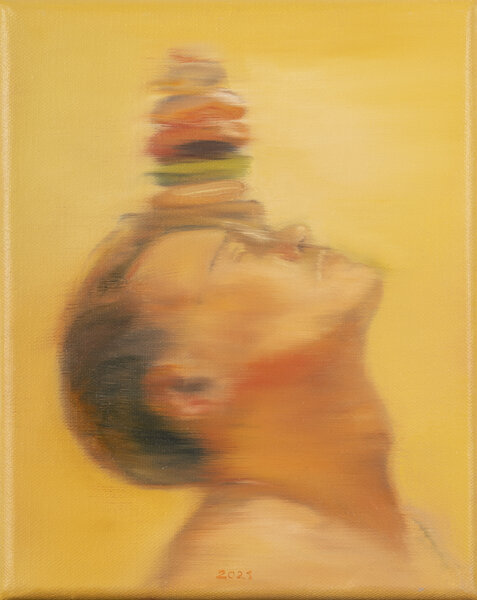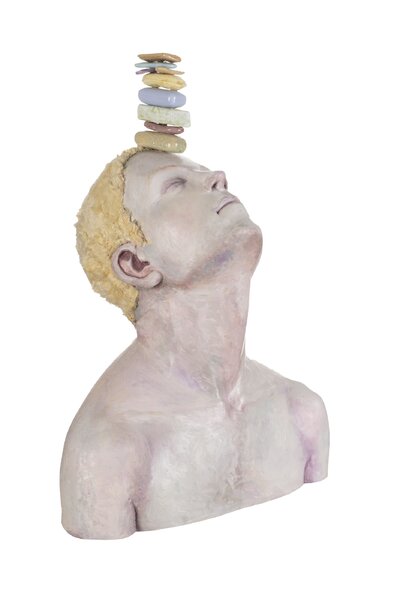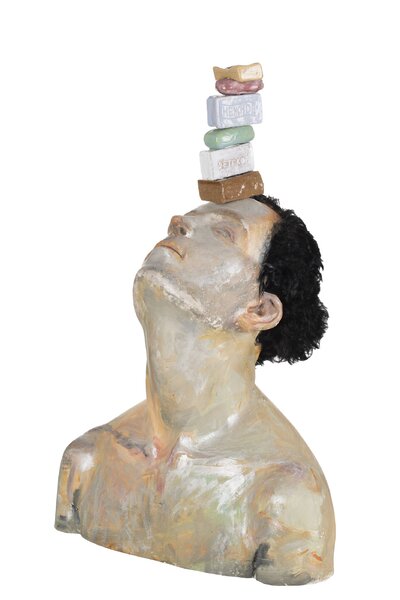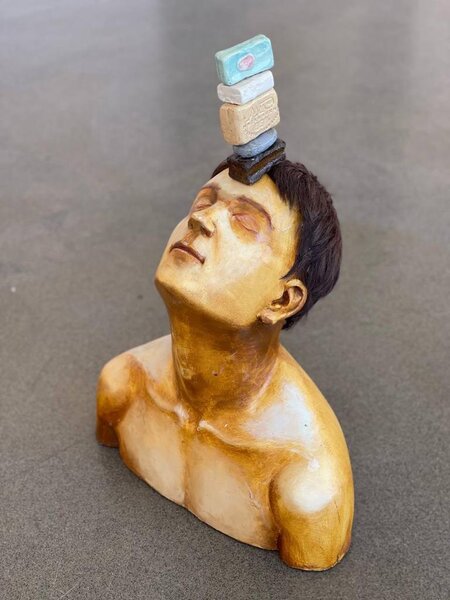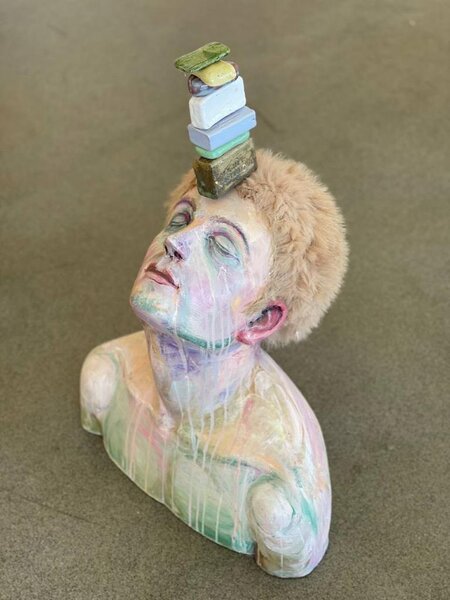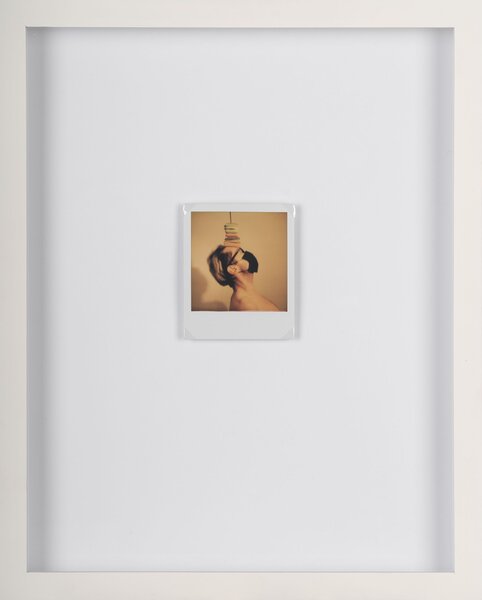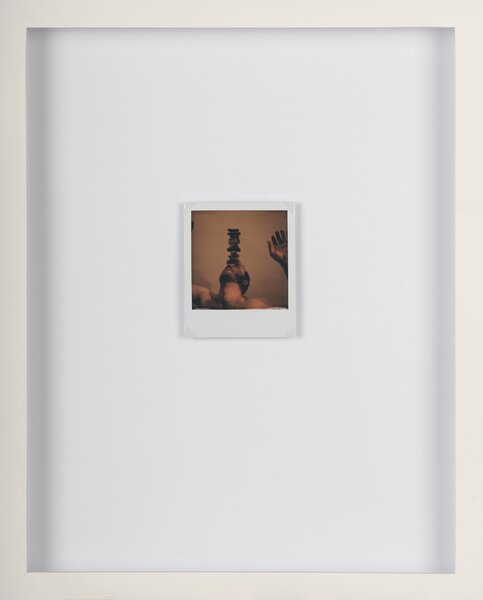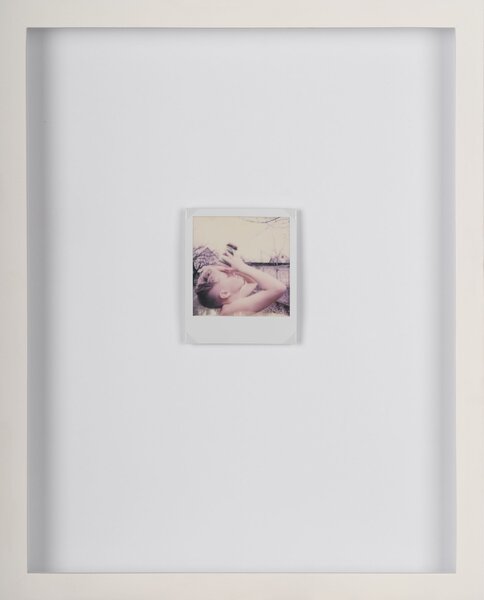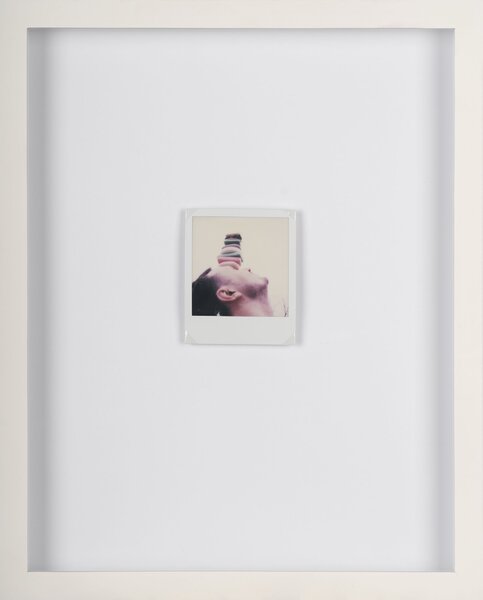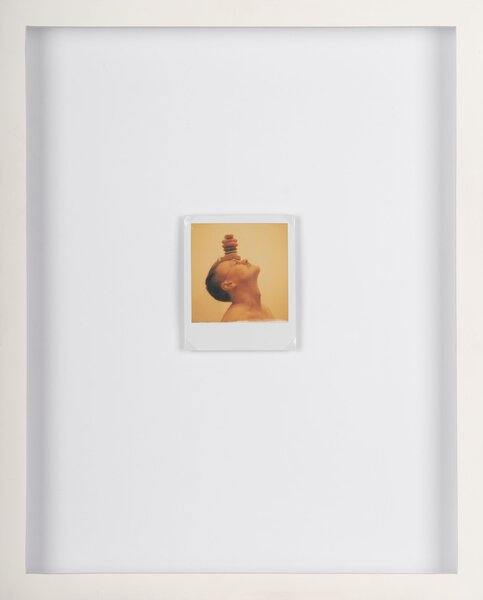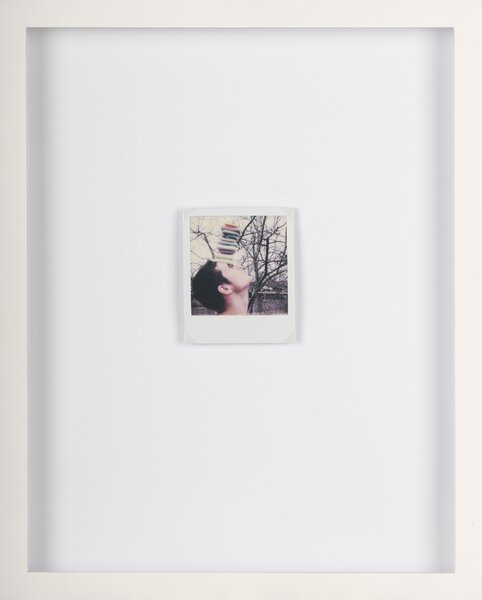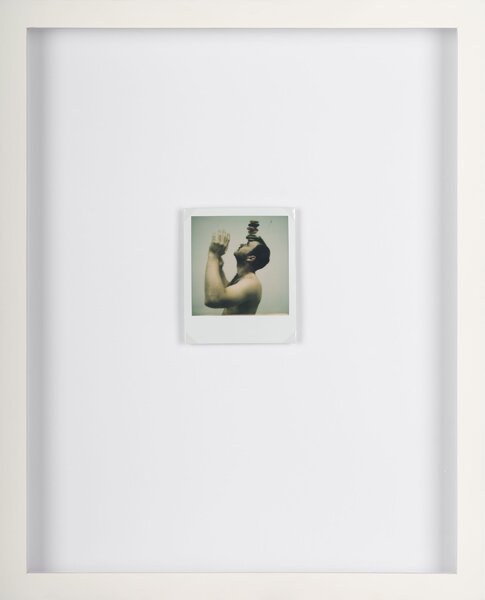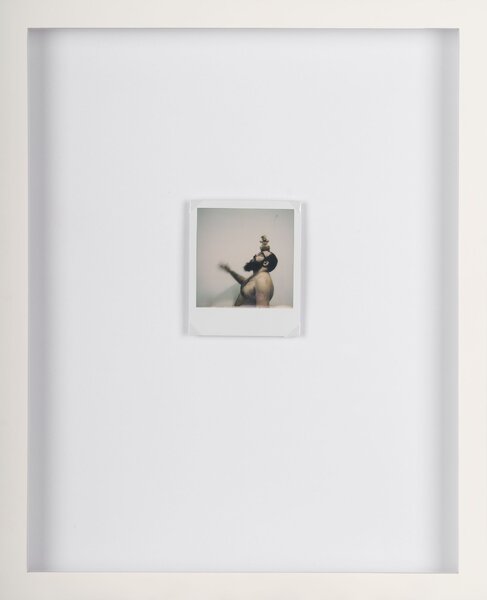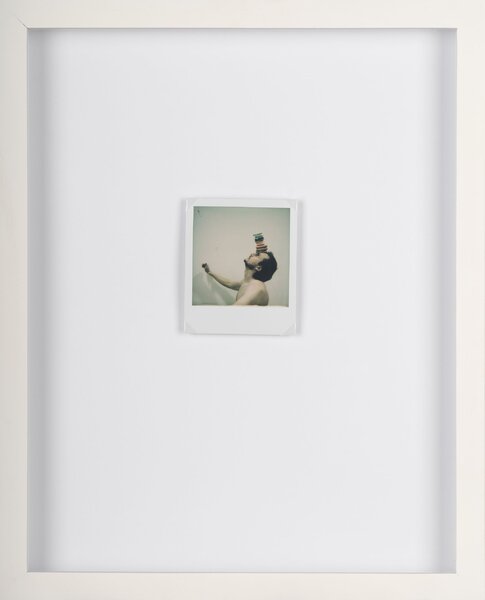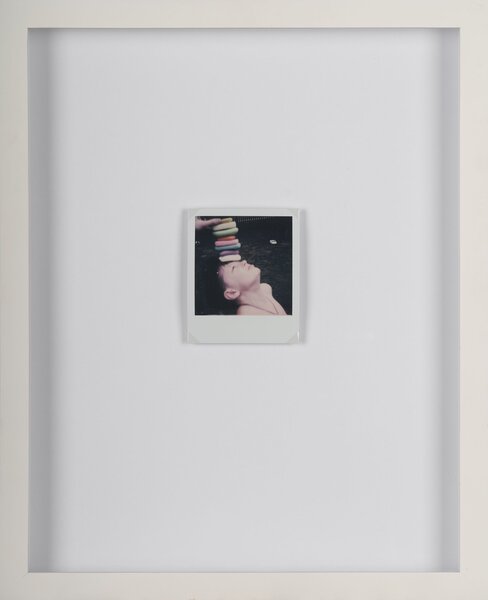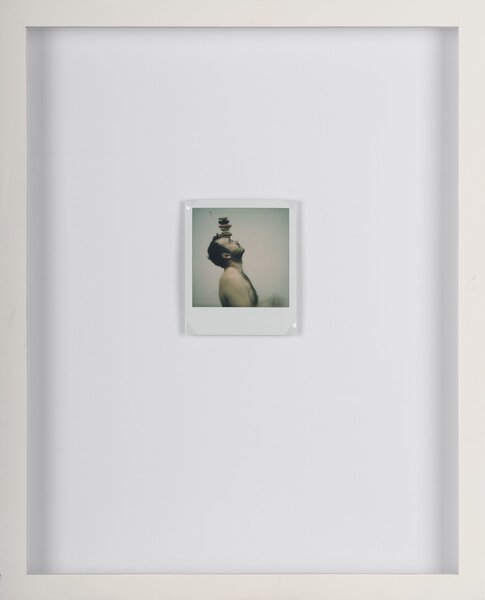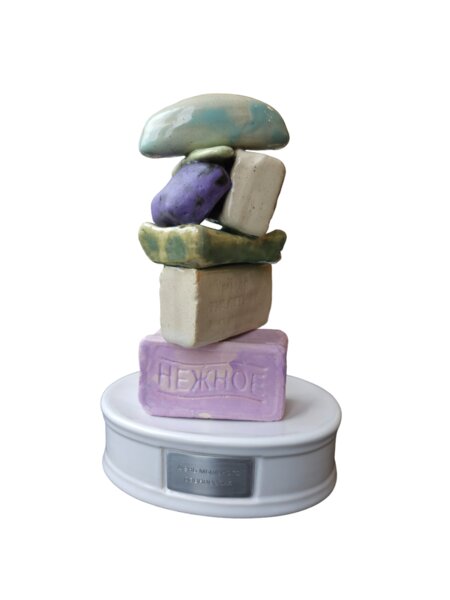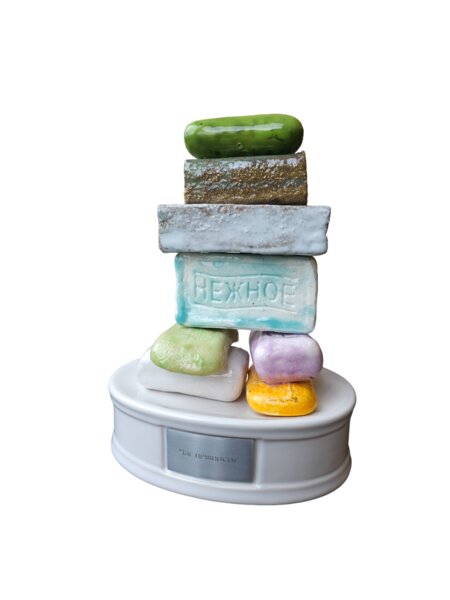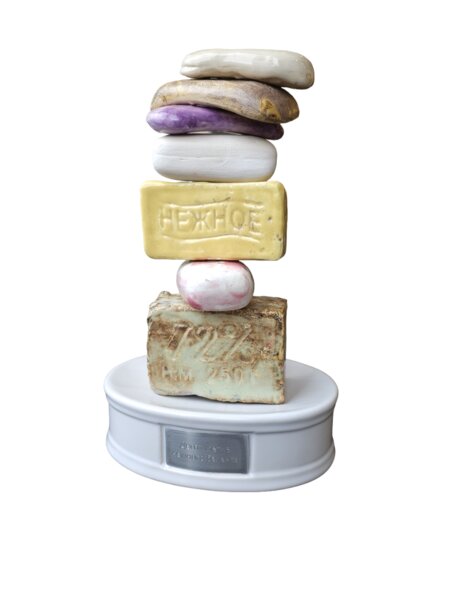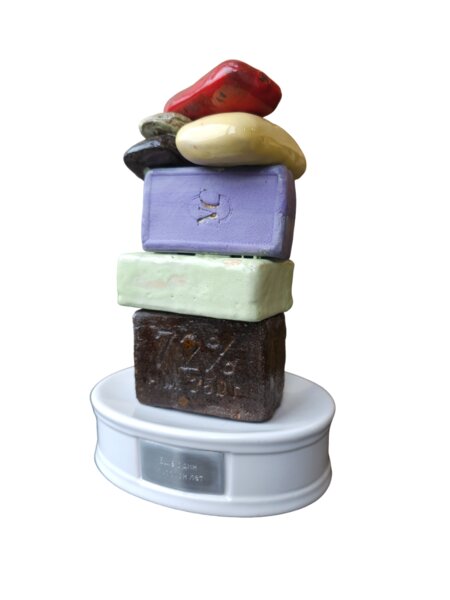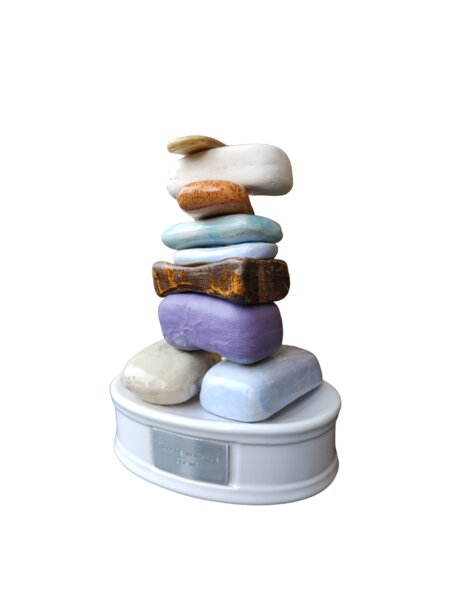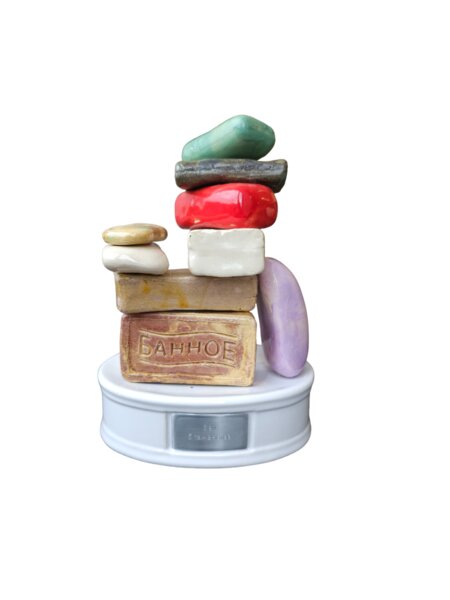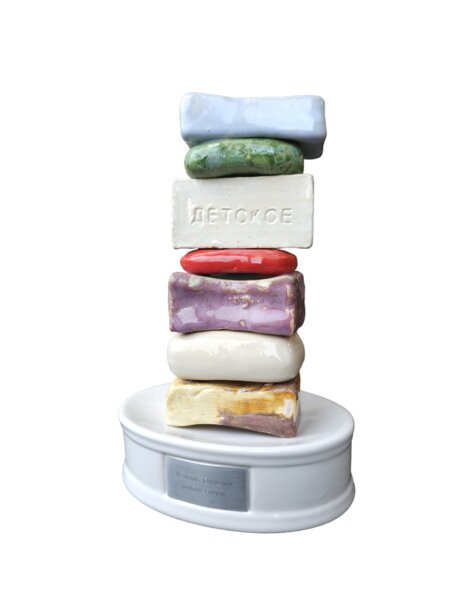Motolyanets is faithful to soap. Having chosen soap as the theme and object of his artistic interest, he has succeeded in creating his own individual mythology. Soap is a constant metaphor, a nuclear mythologem, and also a material the artist works with. Just as for Joseph Beuys fat and wax were an independent, powerful textural element, and also a substitute, embodying the idea and meanings of “social plastics”, an ordinary piece of soap becomes a guide to the world of relevant meanings, manifesting itself as an indicator when launched into the right environment. Perhaps this is also a careful tactic, but it also has an element of irony (self-irony) and necessary critical distance.
But soap in itself is an object loaded with various meanings, which usually have a disappearing connotation. For example, the property of soap to slip through the hands gives it a certain similarity to judgments without a clear, fixed line – this is a performative material, which tries to escape and vanish along with water, expressing the flowing and changeability of states. The phenomenology of soap is such that it allows the artist to adjust his attitude, establishing the necessary discourses of judgments.
In his new project, Motolyanets gathers together almost ten years’ experience of working with soap, utilizing diverse media he has tried over the past years: painting, photography, sculpture, objects, performance. Significantly, the first works in this cycle, canvases with depictions of piles of soap, were the artists’ response to the mass protests in Belarus two years ago. The political source of the works is not obvious. On the contrary, the towers of multicolored soap bars, in the style of “Richterian photo realism” are a triumph of the world of prosperity and consumerism, glamour and hedonism, and the hypertrophied scale reminds us of the success strategy in the promo images of pop art.
The artist turns the aesthetic of “capitalist realism” against itself, working on its territory – and the silent opposition of stretched figures (lying and standing) refers to archaic forms of rituals, traces of which remains in primitive structures – dolmens. Rituals of purification? Stones worn away by time, wind and water, dolmens are synonymous with slivers of soap: the natural and the elemental rhyme with the human and social. There is something childish and infantile in building soap dolmens – a return to archetypical structures, asserting the presence of humans in the world.







